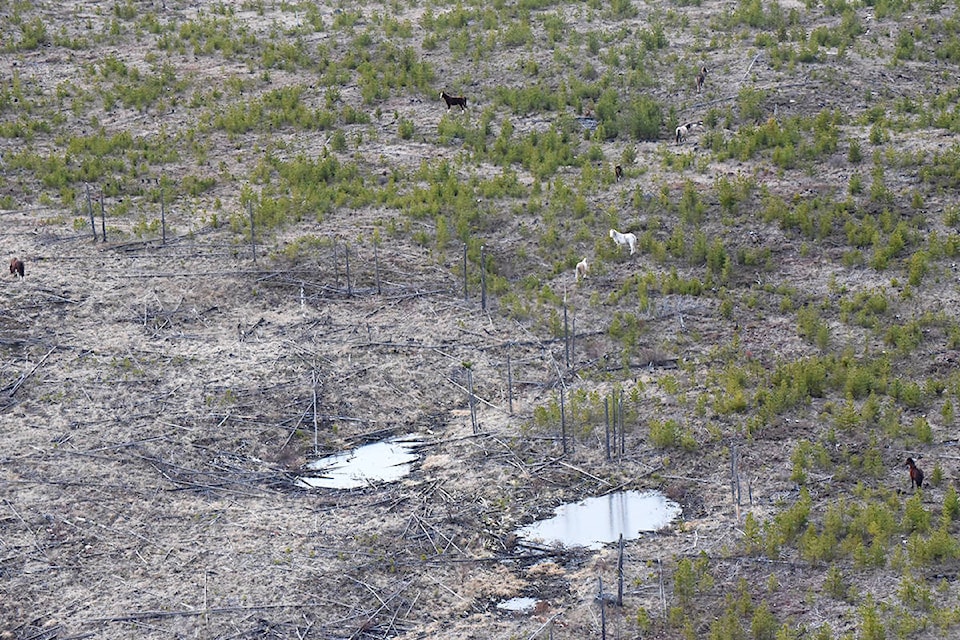As part of a moose management strategy a First Nation community in B.C.’s Interior has been rounding up horses and selling them.
Tl’etinqox Chief Joe Alphonse said the 100s of horses they captured in February and March were on his community’s Indian Reserve land.
“Overall moose populations are declining and we have to look at every sector that affects that,” Alphonse told the Tribune. “You cannot just blame non-resident hunters and that’s it and think if we stop that the numbers are going to come back.”
Moose are competing with other animals and problems of predation, access and wildfires.
His community will be chipping away at all of those things, not just looking at things in a very narrow point of view, he added.
“On IR1 we had over 100 horses on the main reserve so we managed to get most of them and sold a lot of them,” Alphonse said. “We went to IR2 and there were probably over 200 on the IR lands up there so we rounded up a number of them and sold them.”
The program lasted about eight weeks and wrapped up at the end of March.
“We had an overpopulation of horses and they are taking over everything. They are cutting into the grazing. In IR2 for the last two years we had a community policy where we don’t allow horses in IR lands because we are allowing the hay to grow. We turn them out onto Crown land.”
Horse owners would continually open the gates and allow all the horses back into the reserve lands and the horses were causing havoc with hay production, he added.
In his fields alone, horses damaged his crops before he even had a chance get out and cut them, resulting in a 30 per cent loss of his crops.
The numbers need to be curtailed and managed, he said.
“Some of the owners may own 50 to 100 horses, but they don’t do anything with them. They don’t break them, they don’t feed them. We don’t think it is fair or right. If you own horses you should try and do something with them.”
Alphonse said they only round them up, brand them and then turn them out to run free.
There has to be limits to how many horses a person can and should own, he added.
“We love horses, we have them in our Aboriginal right and title case, but it also says that we have the right to manage them. The numbers have to be restricted and our chief and council has chosen to round them up as a result of community members that see what is happening on a day-to-day basis.”
He said to round them up they have set up corrals and chased the horses in. Next year they will target the horses on Crown land and round them up, Alphonse confirmed.
Read more: Citizen sightings needed for B.C. moose tick survey
news@wltribune.com
